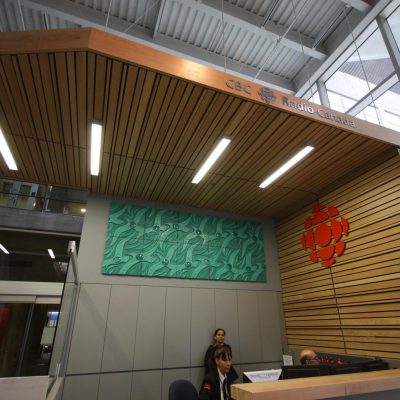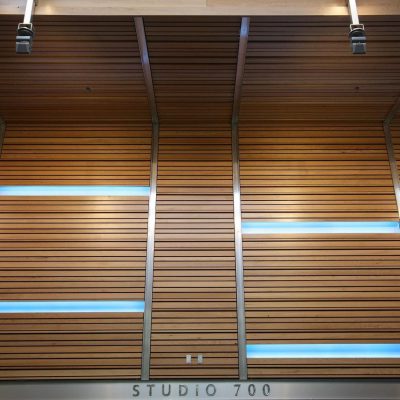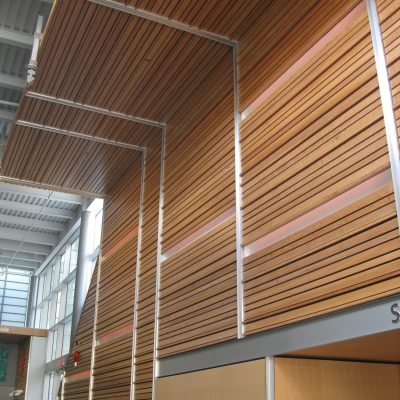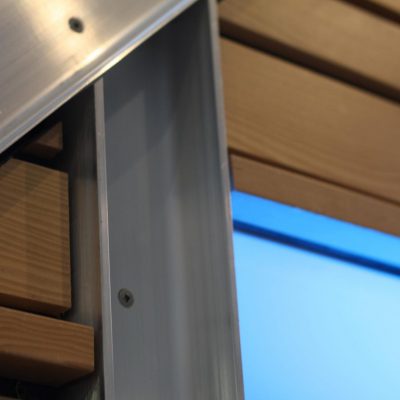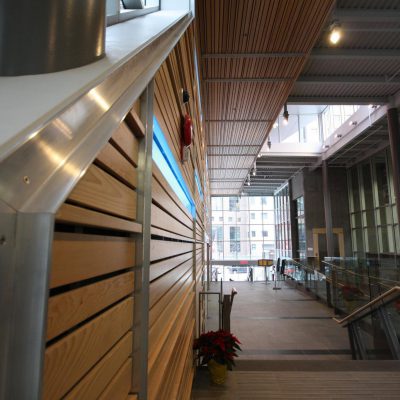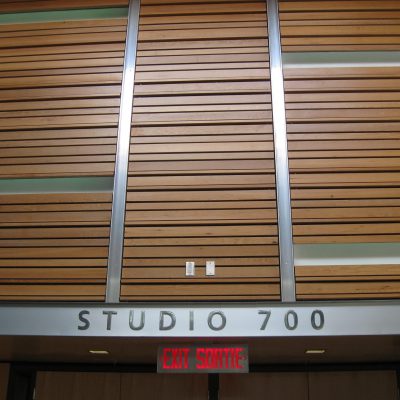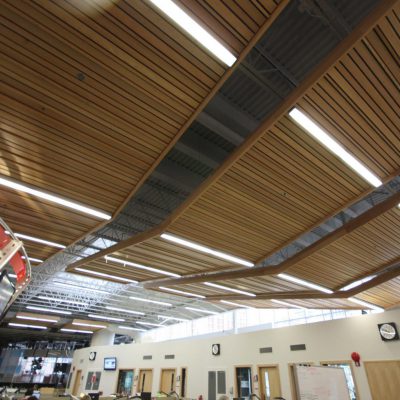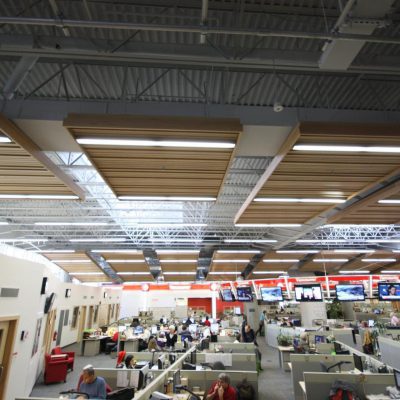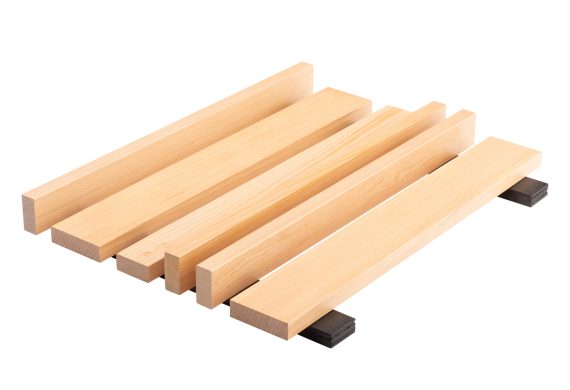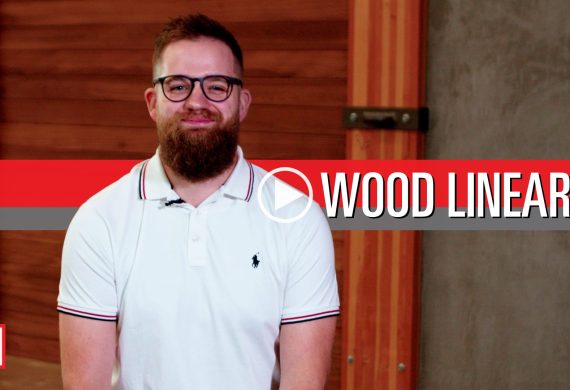CBC Radio Canada — Vancouver, BC
Solid Western Hemlock with Clear Finish
SKU(s):9100-C
Featured Systems
9100 Hybrid Panel
Break up the rhythm of your wood ceiling design by blending grille and linear styles for limitless textures.
Featured Article
New 9100 Hybrid Panels
Break up the rhythm of your wood ceiling design by blending grille and linear styles for limitless textures. Exclusively available in Fast>Track, the 9100 Hybrid Panels offer designers unique textures and options for wood ceilings that ship in 3 weeks.Featured Video
Linear Wood Ceilings – The Most Common Questions
A linear wood ceiling is when you look up from the floor and see a nice, wide piece of wood. We often hear it referred to as a slat or a plank.Project Details

Office

Hotson Bakker Boniface Haden Architects + Urbanistes, Vancouver, British Columbia


10,259

March 2009

2010 Northwest Walls & Ceilings Bureau Outstanding Project of the Year (Suspended Ceiling, Canada)

1660

